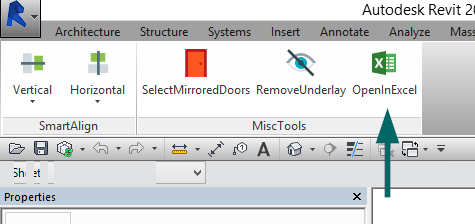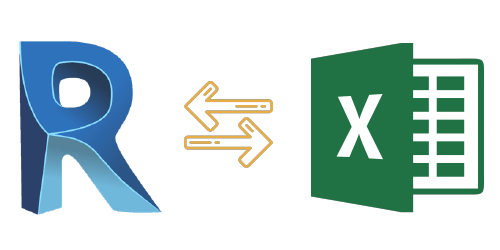Import Excel into Revit: Streamlining Your Workflow
Wiki Article
Revit Accelerator: Excel Integration Techniques for Boosting Efficiency and Partnership
Are you wanting to boost your performance and partnership while using Revit? Look no more! In this post, we will explore the advantages of integrating Excel right into your Revit process. Discover how you can enhance your processes, take full advantage of collaboration, and also learn innovative techniques for enhancing productivity. And also, we will share finest practices for flawlessly integrating Excel right into your Revit jobs. Obtain prepared to supercharge your Revit experience with our Revit Accelerator: Excel Assimilation Methods!Advantages of Excel Integration in Revit
The benefits of Excel assimilation in Revit are numerous and can considerably enhance efficiency and cooperation. By perfectly linking these 2 effective tools, you can simplify your workflow and conserve beneficial time. With Excel combination, you can conveniently import and export data between Revit and Excel, enabling you to take advantage of the staminas of both programs.
One more advantage of Excel assimilation is the capacity to develop vibrant schedules and reports. By linking your Revit design to an Excel spread sheet, any type of adjustments made in Revit will automatically update in the corresponding Excel file. This makes it easy to generate up-to-date routines, quantity takeoffs, and other job documentation.
Excel integration in Revit also enables better collaboration among employee. With the ability to import and export data, you can easily share details with coworkers that may not have access to Revit. This advertises reliable interaction and permits far better coordination and decision-making.
Simplifying Operations With Revit and Excel
Simplifying operations with Revit and Excel can significantly enhance efficiency and partnership. By combining the abilities of Revit and Excel, you can flawlessly transfer information between the two applications, getting rid of the need for manual data access and decreasing the danger of errors.
Utilizing Revit and Excel with each other permits you to utilize the staminas of each program - revit plugins. You can export data from Revit right into Excel, where you can carry out complex computations, create charts and graphs, and assess the info in a more organized and efficient way. On the other hand, you can import information from Excel right into Revit, allowing you to swiftly update your versions and paperwork based on changes made in Excel
The assimilation of Revit and Excel additionally promotes collaboration amongst team participants. By sharing Excel data, you can easily collaborate and connect on design and construction-related information. This improves control and makes certain that every person is collaborating with the most up-to-date details.
Taking Full Advantage Of Collaboration With Excel and Revit
To maximize collaboration with Excel and Revit, you can perfectly update and share layout and construction-related information with your team. By integrating Excel with Revit, you can eliminate the need for manual data access and minimize the danger of mistakes. With simply a couple of clicks, you can import Excel spread sheets into your Revit model, allowing you to quickly accessibility and manipulate the data. This integration enables you to team up much more effectively with your group, as everyone can work with the very same data in real-time.One of the essential benefits of utilizing Master combination with Revit is the capacity to upgrade information in both programs concurrently. Any type of adjustments made in Excel will instantly be mirrored in Revit, and vice versa. This guarantees that everyone is collaborating with the most updated info, preventing confusion and saving important time.
Furthermore, Excel offers powerful tools for evaluating and organizing data, which can substantially boost your cooperation initiatives. You can produce custom-made records and graphes in Excel, assisting you to picture and read interact crucial job info properly. This can be specifically helpful when providing data to stakeholders or making informed choices based upon job metrics.
Advanced Strategies for Improving Efficiency in Revit Using Excel
By using innovative methods in Revit, you can significantly raise your efficiency by leveraging the power of Excel. Among the key approaches for increasing productivity is by utilizing Excel as a data monitoring tool. With Revit's Excel combination function, you can link Excel spreadsheets straight to your Revit design, enabling you to easily handle and upgrade data. This integration enables you to create timetables, compute quantities, and perform information analysis efficiently.
Furthermore, you can make use of Excel macros to automate repetitive tasks in Revit (revit add ins). Macros allow you to tape a collection of actions and play them back with a single click, saving you time and initiative. As an example, you can create a macro to immediately produce area schedules or update parameter values in bulk.
Best Practices for Excel Integration in Revit
Utilizing Excel as a data monitoring tool in Revit allows for reliable administration and updating of information. One of the best techniques for Excel combination in Revit is to create a clear and arranged data structure. By complying with these finest techniques, you can successfully utilize Excel as an information management device in Revit and increase your efficiency and collaboration.Verdict
In verdict, integrating Excel with my blog Revit can greatly enhance productivity and collaboration in the design process. By leveraging the power of Excel, Revit users can achieve greater degrees of productivity and collaboration in their projects.With Excel integration, you can easily import and export data in between Revit and Excel, find here allowing you to utilize the toughness of both programs.
One of the essential advantages of Excel combination is the ability to use Excel formulas and functions within Revit. By linking your Revit model to an Excel spreadsheet, any changes made in Revit will instantly update in the corresponding Excel file. On the other hand, you can import information from Excel right into Revit, allowing you to rapidly upgrade your versions and paperwork based on modifications made in Excel.
With Revit's Excel integration feature, you can connect Excel spread sheets directly to your Revit version, permitting you to conveniently handle and update information.
Report this wiki page